Volume 21
Displaying 1-9 of 9 articles from this issue
- |<
- <
- 1
- >
- >|
Brief Report
-
2022 Volume 21 Pages 51-59
Published: December 20, 2022
Released on J-STAGE: December 20, 2022
Download PDF (5506K) -
2022 Volume 21 Pages 60-67
Published: December 20, 2022
Released on J-STAGE: December 20, 2022
Download PDF (1310K)
Material
-
2022 Volume 21 Pages 68-74
Published: December 20, 2022
Released on J-STAGE: December 20, 2022
Download PDF (981K)
Practical Report
-
2022 Volume 21 Pages 23-28
Published: August 20, 2022
Released on J-STAGE: August 20, 2022
Download PDF (2647K)
Others
-
2022 Volume 21 Pages 29-37
Published: August 20, 2022
Released on J-STAGE: August 20, 2022
Download PDF (409K)
Material
-
2022 Volume 21 Pages 38-50
Published: August 20, 2022
Released on J-STAGE: August 20, 2022
Download PDF (682K)
Practical Report
-
2022 Volume 21 Pages 1-5
Published: April 20, 2022
Released on J-STAGE: April 20, 2022
Download PDF (325K)
Others
-
2022 Volume 21 Pages 6-14
Published: April 20, 2022
Released on J-STAGE: April 20, 2022
Download PDF (670K) -
2022 Volume 21 Pages 15-22
Published: April 20, 2022
Released on J-STAGE: April 20, 2022
Download PDF (323K)
- |<
- <
- 1
- >
- >|
